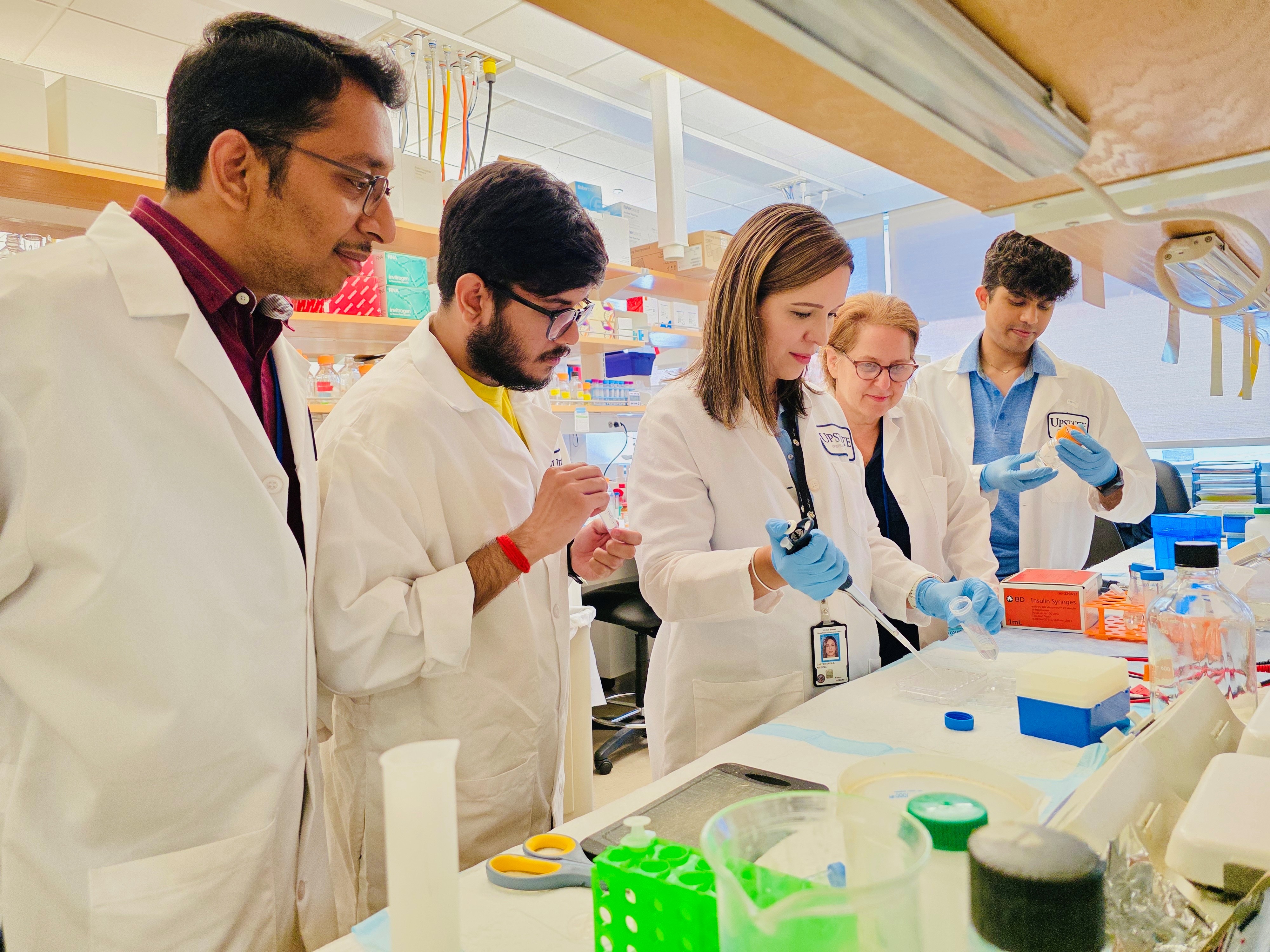Autophagic Dysfunction in Exfoliation Glaucoma

About the Research Project
Program
Award Type
Standard
Award Amount
$150,000
Active Dates
July 01, 2016 - September 30, 2018
Grant ID
G2016151
Co-Principal Investigator(s)
J Wolosin, PhD, Icahn School of Medicine at Mount Sinai
Goals
In exfoliation syndrome (XFS), which can lead to glaucoma, the eye starts accumulating “white fluff” deposits composed of protein aggregates. The aggregates eventually block the exit of fluid from the eye, causing a buildup of pressure that can lead to blindness. We have discovered that cells obtained from XFS eyes have a dysfunction in the cellular machinery that degrades protein aggregates. We hypothesize that this dysfunction leads to an accumulation of “cellular trash” that becomes toxic to the cell. In this project, we will test methods to accelerate degradation of this cellular waste to improve the health of XFS cells.
Note: This grant was transferred from the Icahn School of Medicine at Mount Sinai to SUNY Upstate Medical University on July 1, 2017.
Summary
Our goal is to reverse the effects of exfoliation syndrome (XFS), the leading identifiable cause of open-angle glaucoma.
Like recent work in studies of several other age-related diseases, such as age-related macular degeneration (AMD) and Alzheimer’s disease, our lab has found that XFS cells have a dysfunction in the cellular machinery that would normally degrade protein aggregates (autophagy and lysosomes) and in the organelle that produces the energy needed for the cellular degradation (mitochondria). Our hypothesis is that these defects play a role in generating the accumulation of cellular waste that becomes toxic. We are growing cells from tissue derived from XFS patients who have undergone glaucoma surgery to relieve pressure in the eye. These cells are called tenon fibroblasts. Since one of the major challenges of XFS research has been a lack of model systems for experimental purposes, our patient-derived cells provide a wealth of opportunity to identify critical pathways that are disrupted in XFS-affected cells and to use these patient cells to screen for molecules that can reverse lysosomal and mitochondrial dysfunction.
Specifically we will utilize the tenon fibroblast model system to 1) distinguish the proteomic profiles specific to XFS cells and the autophagic defect; 2) test that the autophagic defect in these cells is the reason for the build-up of toxic aggregates as we have hypothesized and 3) screen these patient-derived cells with autophagy-stimulating drugs to identify compounds that may reverse the dysfunction. Together these approaches will drive towards our goal of reversing XFS pathology in patients.
Related Grants
National Glaucoma Research
Enhancing Access to Glaucoma Care Using Artificial Intelligence
Active Dates
July 01, 2025 - June 30, 2027

Principal Investigator
Benjamin Xu, MD, PhD
Current Organization
University of Southern California
National Glaucoma Research
Developing a New Glaucoma Treatment That Avoids Daily Drops
Active Dates
July 01, 2025 - June 30, 2027

Principal Investigator
Gavin Roddy, MD, PhD
Current Organization
Mayo Clinic, Rochester
National Glaucoma Research
Human Retinal Regeneration to Cure Glaucoma
Active Dates
July 01, 2025 - June 30, 2027

Principal Investigator
Karl Wahlin, PhD
Current Organization
University of California, San Diego




